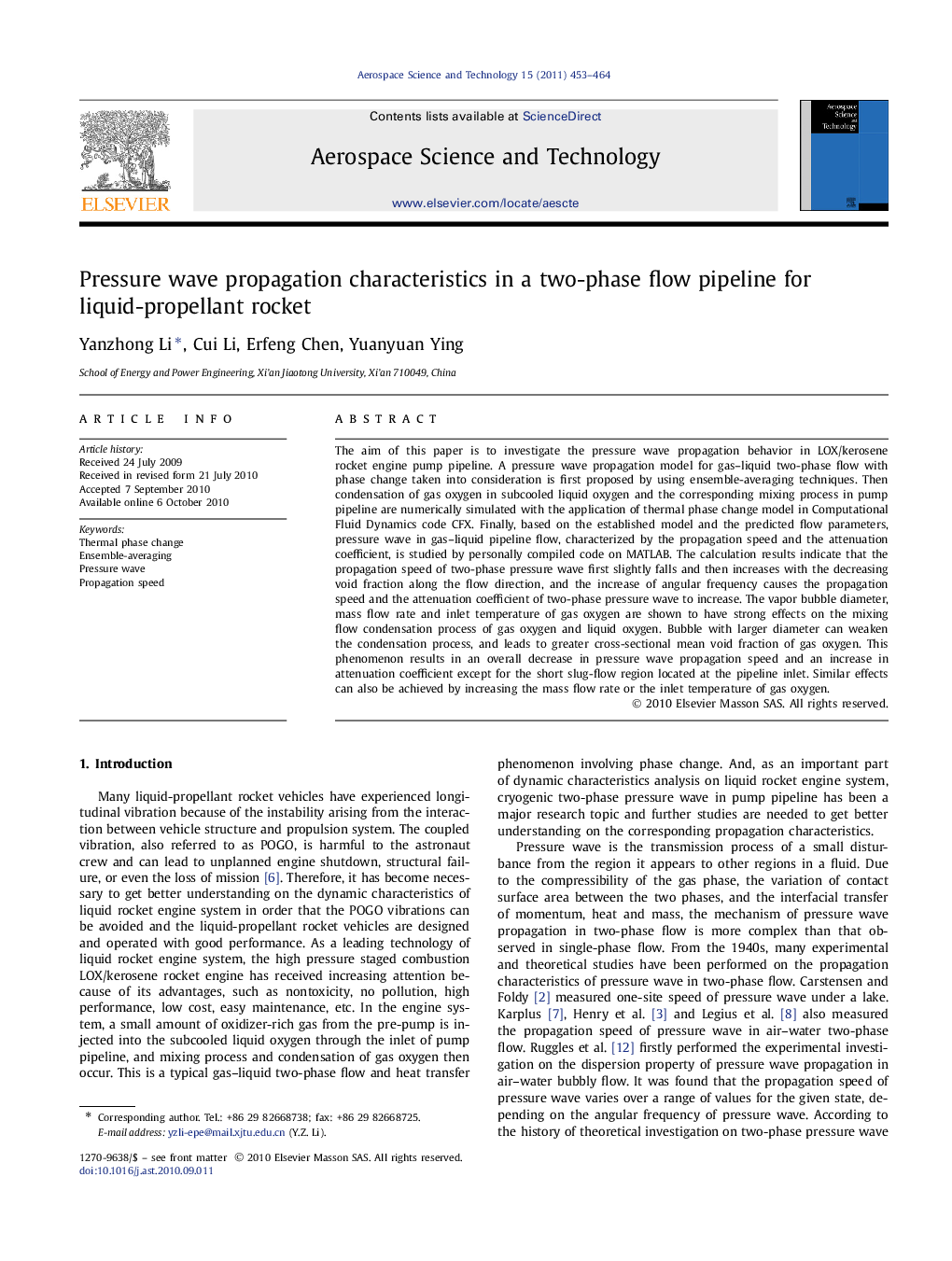| Article ID | Journal | Published Year | Pages | File Type |
|---|---|---|---|---|
| 1718610 | Aerospace Science and Technology | 2011 | 12 Pages |
The aim of this paper is to investigate the pressure wave propagation behavior in LOX/kerosene rocket engine pump pipeline. A pressure wave propagation model for gas–liquid two-phase flow with phase change taken into consideration is first proposed by using ensemble-averaging techniques. Then condensation of gas oxygen in subcooled liquid oxygen and the corresponding mixing process in pump pipeline are numerically simulated with the application of thermal phase change model in Computational Fluid Dynamics code CFX. Finally, based on the established model and the predicted flow parameters, pressure wave in gas–liquid pipeline flow, characterized by the propagation speed and the attenuation coefficient, is studied by personally compiled code on MATLAB. The calculation results indicate that the propagation speed of two-phase pressure wave first slightly falls and then increases with the decreasing void fraction along the flow direction, and the increase of angular frequency causes the propagation speed and the attenuation coefficient of two-phase pressure wave to increase. The vapor bubble diameter, mass flow rate and inlet temperature of gas oxygen are shown to have strong effects on the mixing flow condensation process of gas oxygen and liquid oxygen. Bubble with larger diameter can weaken the condensation process, and leads to greater cross-sectional mean void fraction of gas oxygen. This phenomenon results in an overall decrease in pressure wave propagation speed and an increase in attenuation coefficient except for the short slug-flow region located at the pipeline inlet. Similar effects can also be achieved by increasing the mass flow rate or the inlet temperature of gas oxygen.
